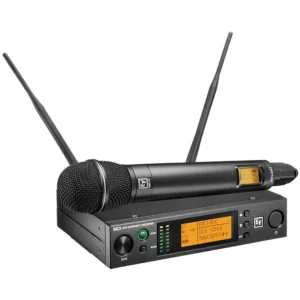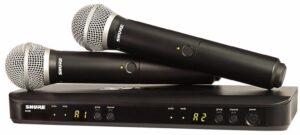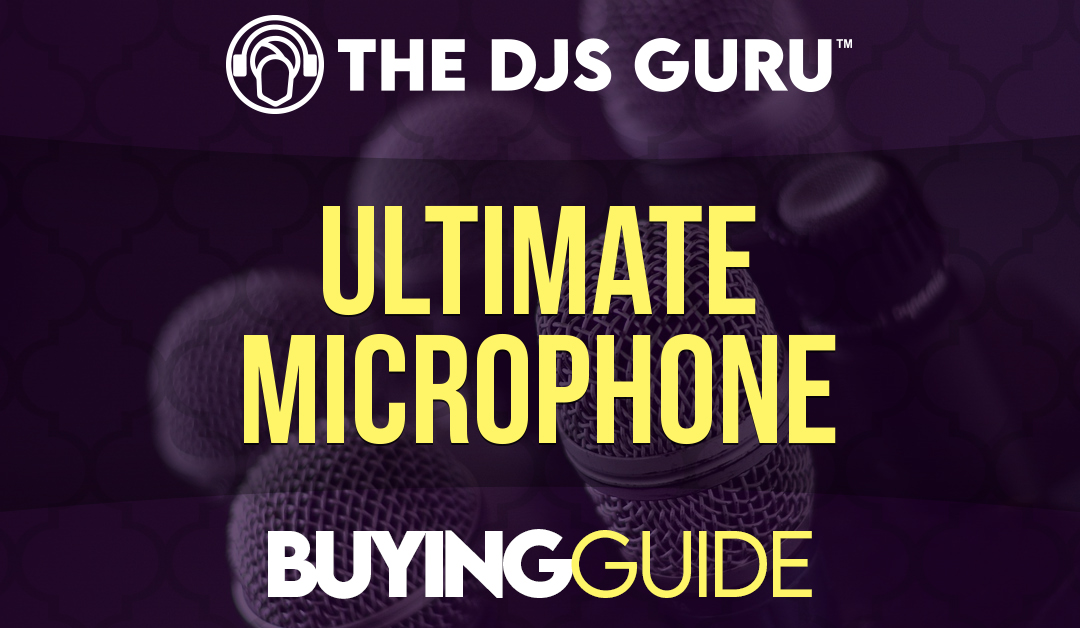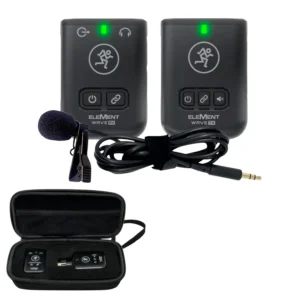If you’re not a DJ, entertainer, or singer, microphones seem like a pretty straightforward topic. For the casual person, they all more or less look the same and do the same thing. However, if you’ve spent any time trying to buy one, you know there are a lot of options. So many, in fact, that it can be super overwhelming! What’s the difference between dynamic and condenser? Directional or omnidirectional? And what the heck is a super-cardioid?! And those are just a small sampling of terms you’ll see thrown around by the great microphone manufacturers like Shure, Audio Technica, Electro-Voice, and JTS. Today, we’re going to dive into what all these things mean. We’re also going to talk about what each mic is best for and when you might want one over another. Buckle up – this is the ultimate microphone buying guide.
Looking to buy and need personal support? Visit DJSupplyStore.com
The basics

Dynamic vs condenser
The first big thing to differentiate when it comes to choosing a microphone is the basic type of microphone, of which there are two – dynamic and condenser. Both of these mics convert sound waves into voltage but they do it in different ways. A dynamic microphone utilizes a magnet to turn sound waves into a signal that can be amplified within your sound system. A condenser microphone uses a capacitor to convert sound waves into electricity. As the charged backplate and diaphragm vibrate, they move closer and farther away from each other, generating the signal. Because you need to “charge” the system, condenser microphones require external power (called phantom power) to work properly.
Which do I choose?
This is all a little nerdy, but these different characteristics shape what the microphones are useful for. Dynamic microphones have a more simple construction. They are rugged and more affordable most of the time. They can also handle very high sound pressure levels! Because of these traits, dynamic microphones are the preferred choice for live sound and performance. They can handle the abuse of being on the road and being thrown around.
Condenser microphones, on the other hand, are more complicated. They can be delicate and are more expensive to produce. Because they require a small charge to function, they can have a noise floor (a small amount of noise heard at baseline). Temperature and humidity affect condenser microphones more so than dynamics. However, condenser microphones have a higher sensitivity to sound and provide a smoother, more natural sound. They can pick up small nuances in music and reproduce them more faithfully. For this reason, they are often used in the studio setting.
In this ultimate microphone buying guide, we recommend a dynamic microphone for your first live sound purchase and a condenser microphone for a podcast or studio work.
Looking to buy and need personal support? Visit DJSupplyStore.com
Directionality
The next important aspect of choosing a microphone to cover is directionality. A microphone can either be directional or omnidirectional. A directional microphone captures sound in a certain space around the microphone. In a handheld dynamic microphone, for instance, this may be the area directly in front of the microphone grille. Why would someone want this? If you’re in a live environment, you don’t want your microphone to pick up other noises on stage. You also don’t want to amplify the sound of the crowd and cause feedback!
An omnidirectional microphone, on the other hand, picks up sound from all directions. Instead of selectively isolating a certain area, it grabs any incoming sound and amplifies it. In what situation would you want this? Take, for example, a speaker or presenter at a conference. If they need their hands for note cards or presenting, they can’t hold a directional microphone. A clip-on lapel microphone is a good solution, but a mic clipped to a shirt is probably not pointing directly at the speaker’s mouth. Instead, an omnidirectional microphone can pick up the speaker’s voice no matter what way their head is pointing.
Pickup patterns
Directionality can be broken down by the shape of a mic’s pickup pattern. A pickup pattern determines what areas around the microphone grille the diaphragm will “pick up”. The cardioid pickup pattern is probably the most well-known and versatile pickup pattern. Cardioid means “heart-shaped,” so imagine a heart coming out of the microphone with the point aiming towards a singer’s mouth. A popular variation on the cardioid is the “super-cardioid.” The super-cardioid has a narrower pickup pattern that further allows the microphone to reject any noises coming from the sides or back of the microphone. Another pattern is the bi-directional or figure 8 pattern, which is popular with interview and podcast microphones. It picks up sound equally on the front and back of the microphone and is great for when two people are speaking across from each other.
For our ultimate microphone buying guide, we recommend a cardioid pickup pattern for the majority of first-time buyers.
Form factor
The last big factor to consider when choosing a microphone is the form factor. Depending on your application, you may want a microphone that is handheld, clipped on a shirt, or worn on the head. Each of these designs has pros and cons that have to be considered in order to get the best possible sound. In addition, many people (like wedding DJs) choose one microphone type over the other based on appearance. It seems crazy to consider sacrificing sound quality for looks, but it’s an important thing to think about with some clients. Let’s dive into these different mic options.
Looking to buy and need personal support? Visit DJSupplyStore.com
The handheld mic
The most ubiquitous microphone is the handheld. Everyone has most likely seen and used one, from karaoke junkies to family reunion hosts. They can be super cheap or you can splurge for a more spendy option. Regardless, they are easily the most popular microphones in use. They are simple to operate – simply pick it up and point it at your mouth. Most are made of metal and rugged to withstand the occasional drop or bump from an enthusiastic artist or party guest.

The lapel microphone
A lapel (or lavalier) microphone is a smaller piece of gear that clips to a shirt, coat, or dress. Most are dynamic and have an omnidirectional pickup pattern. Lapel microphones are especially popular for speaking events and wedding ceremonies. They are easy to hide out of sight and unobtrusive when pictures need to be taken. Additionally, clipping a wireless mic on a belt allows a performer to walk around freely without holding anything.
Their omnidirectional pickup pattern can be difficult to work with, however. Because they need to be able to pick up a voice even when they aren’t pointed directly at it, they have to be quite sensitive. This makes dealing with feedback tougher, and you need to be mindful of where you are standing. They don’t have as full of a sound as a bigger handheld microphone, so vocals may sound a little bit thin. With all that being said, they have their place when appearance takes priority at an event.
Looking to buy and need personal support? Visit DJSupplySore.com
Headsets
Lastly, we have headset microphones. These don’t get as much attention in the live sound and DJ space as the other two options. Traditionally, most people associate headset microphones with plays and acting as well as fitness instructors. For high-intensity activities where the speaker/singer needs their hands free, a headset mic is the ticket. Securing the mic to the head means that the mic will stay in place when the person is moving, running, or even jumping while speaking.
Headset microphones come in both omnidirectional and directional flavors. You can purchase one in the standard black color or in a variety of skin tones to better blend in during a performance. Like lapel microphones, they are mostly wireless and utilize a transmitter pack hidden under clothes or on a belt.
Wrapping things up
Whew! That was a lot of information. While the vast world of microphones can seem daunting, we hope this ultimate microphone buying guide has been helpful. Whether or not you are making your first mic purchase or your 10th, the info in this guide should give you the basics you need to make the right choice. Make sure to comment or reach out to us direct at TheDJsGuru for any advice or if you’re looking for a great deal, great experience and payment options check out our partner site at DJSupplyStore.com. 1888-378-1744



